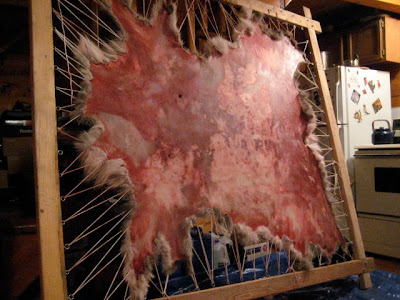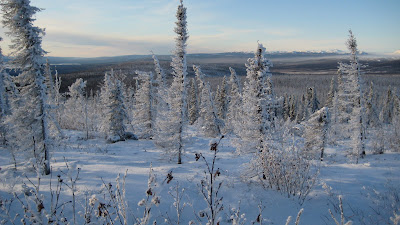I got to write about renewables today. Here's the story, but first...
This is pretty amazing.
For one, these aren't small projects. I looked mostly at the ones sponsored by Golden Valley up in Fairbanks, two of which top out at 50 megawatts. GVEA's entire load is a little over 200MW.
Second, they seem to make economic sense, in that they'll save more money over the long run than they cost to build, in some cases two or three times as much. This sounds obvious, but in a lot of places customers are willing to pay a premium for "green" power. Here the green isn't even counted as a benefit and is simply icing on the cake.
Third, I'm pretty sure these are the conventional projects -- solar thermal, in-river hydro, wind power, geothermal. The state isn't funding the really far out stuff yet.
And last, this is just the start. Not all these projects will get built, most likely, but if $5 million in grants jumpstarts a few $10 million or $100 million projects, imagine what $50 million in grant money will do next year.
JUNEAU — With a little help from the state, Golden Valley Electric Association is looking to cut back on fossil fuels and start making hot water and power from the sun, the wind and the Nenana River current.
The Alaska Energy Authority, a public corporation of the state, this week gave the utility $212,000 to study four alternative energy projects across Golden Valley’s coverage area.
Two projects involve hydropower. The first would generate up to 50 megawatts of electricity at a dam on the Tanana River near Delta Junction. The second would make 10 megawatts of power from the Nenana River near Healy using generating units in the river rather than a dam.
A third project would generate up to 50 megawatts from wind turbines in the Eva Creek area near Healy, and the fourth would actually cut electricity usage by relying on solar energy to heat water at two facilities near Denali National Park and Preserve.
“This is kind of an opportunity to come up with some things that might be a little outside the box,” Golden Valley spokeswoman Dianne Porter said Thursday.
The grants are small in relation to the overall project costs. AEA put just $60,000 toward the dam project, which is expected to cost $130 million.
Porter said the grants will allow Golden Valley to assess the feasibility of the projects without using members’ money. The utility has pursued the wind power project for years, but the others are relatively new.
A total of about $5 million in grants was awarded statewide through a collaborative effort between AEA and the Denali Commission, a federal-state partnership.
Most of the 33 grants were awarded for pre-construction studies, but some grants were given for construction of alternative energy projects, including a geothermal power plant at Manley Hot Springs and a wood-fired heating system in Fort Yukon.
To qualify for the grants, project sponsors had to show the projects would save enough money in displaced fossil-fuel costs to offset the cost of construction. Three of the Golden Valley projects — all but the solar thermal project — are expected to pay for themselves two or three times over.
Karsten Rodvik, a spokesman for AEA, described the grants as a first step toward displacing costly fossil fuels and bringing down the cost of energy.
“The goal, of course, is the development of a long-term plan that provides low-cost, reliable, sustainable power,” he said.
According to Rodvik, AEA is planning to issue a similar request for proposals this summer for $50 million in grant money, or 10 times what was awarded this week, although the project criteria will likely be different.
The grants are considered helpful because alternative energy projects typically cost more to build than conventional energy projects. The projects can ultimately save money because they don’t require fuel.
State lawmakers and Gov. Sarah Palin agreed this year to put $250 million toward alternative energy projects during the next five years.





 I finally tanned my caribou skin this weekend after putting off the project since early November. I did one last year, and remember the whole process being frustrating and hard – the kind of work that makes you physically sore. And it all needs to happen at once.
I finally tanned my caribou skin this weekend after putting off the project since early November. I did one last year, and remember the whole process being frustrating and hard – the kind of work that makes you physically sore. And it all needs to happen at once.



































